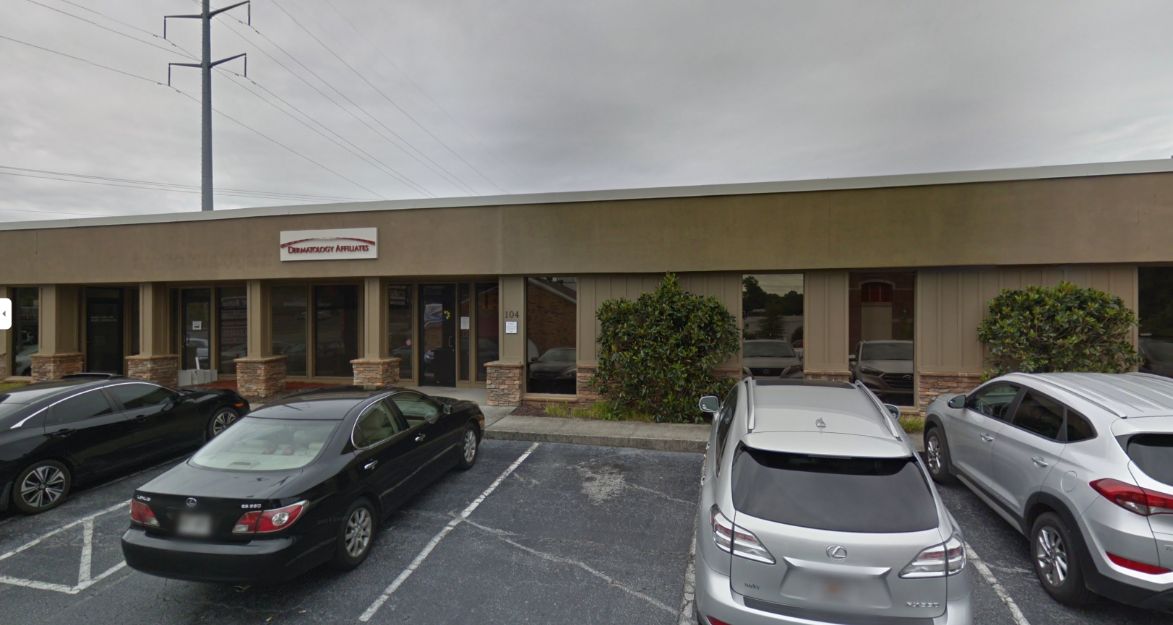Impetigo
There are three forms of impetigo:
Ordinary Impetigo is caused by Streptococcal germs. It appears as red sores that rupture quickly, ooze a fluid, and then form a honey-colored crust. It primarily affects children from infancy to age two.
Bulbous Impetigo appears as fluid-filled blisters caused by Staphylococcus germs. This contagious infection is carried by the fluid that oozes from the blisters.
Ecthyma is a more serious form of impetigo that penetrates to the second layer of skin (dermis). It is characterized by sores that are painful and/or fluid or pus-filled. These lesions most commonly appear on the legs or feet. The sores break open and scab with a hard yellow-gray crust. It can also cause swollen lymph glands in the affected area.
Recognizing the importance of prompt treatment, our dermatology providers offer specialized care for impetigo, providing effective solutions to alleviate symptoms and prevent the spread of infection. At Dermatology Affiliates, your skin is our priority. If you suspect impetigo, schedule an appointment with a trusted Pinnacle Dermatology provider for a thorough evaluation and tailored treatment journey to healthy skin.
Examples of Impetigo
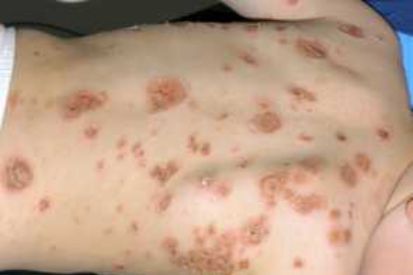
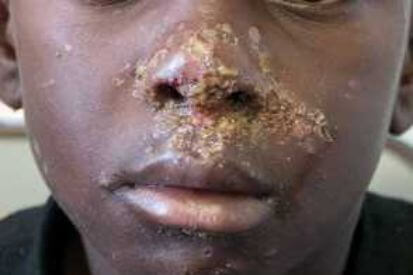
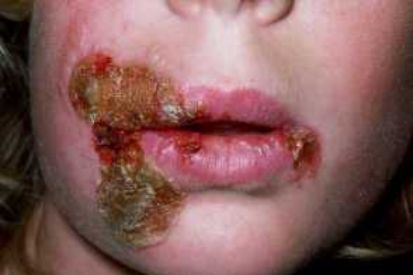
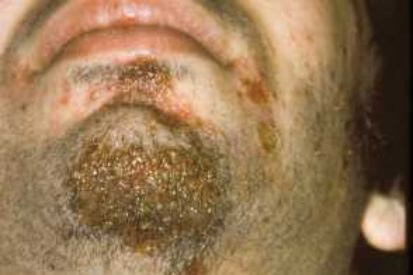
What are the Symptoms of Impetigo?
- Single or multiple blisters filled with pus, which pop easily and leave a reddish, raw-looking base and/or honey-colored crust.
- In most children, impetigo first appears near the nose and then spreads through scratching to other parts of the face, arms, or legs.
- Itchy blisters.
Causes of Impetigo
- Bacteria Staphylococcus aureus or Streptococcus pyogenes.
- Bacteria entering the skin through cuts, scrapes, or existing skin conditions.
- Bacteria exploiting the openings created by insect bites or the warm, moist environment around the nose and mouth.
- Direct contact with the sores or by touching items like towels or clothing that have met the infected skin.
- Warmth and humidity further promote the bacteria's growth, making certain environments more conducive to impetigo transmission.
How to Prevent Impetigo
- Regular Handwashing: Encourage frequent handwashing with soap and water, especially after activities that involve skin contact, playing in shared spaces, or using communal items.
- Prompt Wound Care: Thoroughly clean and cover any cuts, scrapes, or insect bites to prevent bacteria from entering the skin. Immediate attention to minor injuries is crucial
- Avoiding Skin-to-Skin Contact: Minimize direct skin contact with individuals showing signs of impetigo or other contagious skin conditions. Refrain from using personal items like towels or clothing belonging to an infected person.
- Cleanliness in Shared Spaces: Maintain cleanliness in communal spaces, particularly in schools, daycares, and sports facilities. Regular disinfection of surfaces and shared items helps prevent the spread of bacteria.
- Education: Teach individuals to use their own items for personal hygiene to reduce the risk of sharing bacteria. Educate individuals, particularly parents and caregivers, about the symptoms of impetigo and the importance of seeking medical attention promptly for diagnosis and treatment.
Impetigo FAQs
Impetigo is a highly contagious skin infection characterized by red sores that eventually develop into honey-colored crusts. It commonly appears around the nose and mouth. If you observe red sores that rupture and form a distinctive golden crust, it could indicate impetigo. Prompt diagnosis and treatment are essential to prevent spreading and ensure effective healing.
Impetigo typically begins to improve within a few days with proper treatment. Dermatologists often prescribe antibiotics to eliminate the infection. It's crucial to follow their instructions for the full course of the medication.
How to Treat Impetigo
Topical antibiotics available over the counter, such as Neosporin, are not recommended for treating impetigo. Our dermatologists prescribe specific formulations tailored to combat the specific bacteria responsible for the infection.
In addition to antibiotic therapy, our team may advise gentle cleansing of the affected areas to remove crusts and promote healing. It is important to refrain from picking at the sores to prevent further spread of the infection.
If you suspect you or a loved one has impetigo, schedule an appointment with one of our dermatology providers today to get a customized treatment plan specific to your needs and begin the journey to healthy skin.
Featured Blogs

- Injectables or Fillers
- Cosmetic Treatments
I have struggled with a double chin basically all my life. Most of my family has one, even the smallest of us have a little bit of chin fat. Through my years at Dermatology Affiliates, I have tried multiple procedures we offer in the office including both CoolSculpting with the CoolMini attachment and Kybella injectable therapy. I had results with both treatments that have lasted around 3 years since my procedures.
Read More
- Skin Care
- Cosmetic Treatments
The cosmetic treatment “microneedling” has created quite a buzz in the beauty industry as a restorative skin treatment. Now, its rejuvenating abilities extend to the scalp too.
Read More
- Skin Cancer
- General Dermatology
- Sun Safety
A person will get sunburned from spending time outside without sunscreen and sun-protective clothing. Read to learn more about the dangerous effects of sunburn.
Read MoreFeatured Products
Check your local office for current stock!
Check your local office for current stock!


